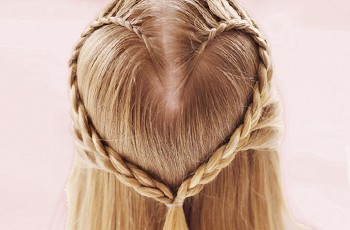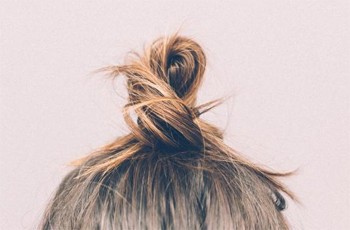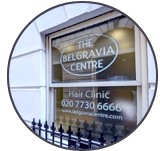While 2015 may be remembered for many things – Volkswagen, Syria and Spectre among them – in certain circles it may well be remembered for something rather different: hair loss.
And that’s because the most-searched for beauty trends on Google this year have all been things that are famously bad for your hair.
According to style website Bustle, the top three most-searched Google trends of 2015 in the field of beauty and grooming were all about hair: make-up didn’t even get a look-in. Here, we’ll take a look at them (in reverse order) and explain why their popularity might just see this year go down in the history books as something of a hair loss ‘annus horribilis’…
3/ Grey and purple hair
 One of the year’s more surprising hair trends – as rocked by Katy Perry and Rihanna and many more headline-seeking celebrities – was for unusual hair colours. Grey, or perhaps more accurately, silver was distinctly in – despite managing to secure the rather unflattering hashtag of #grannyhair for itself. Attention-grabbing violet-hues, too, were popular as the selfie trend and a general ‘need to be seen’ mentality helped define the year.
One of the year’s more surprising hair trends – as rocked by Katy Perry and Rihanna and many more headline-seeking celebrities – was for unusual hair colours. Grey, or perhaps more accurately, silver was distinctly in – despite managing to secure the rather unflattering hashtag of #grannyhair for itself. Attention-grabbing violet-hues, too, were popular as the selfie trend and a general ‘need to be seen’ mentality helped define the year.
Sadly, it might well be that 2016 is remembered by those same people as the year they spent paying for their flamboyance. The problem with many hair dyes is that they just aren’t very kind on the hair. The more dramatic the colour, the more likely the hair will have first been stripped of its natural colour by bleaching. Back in 2011, in fact, Lady Gaga told People magazine that her hair was falling out because she coloured it so much. The main problem is hydrogen peroxide, which can lead to a general weakening of the hair. If your 2015 has seen you experimenting with some interesting colours and you’re already worried you’re starting to pay the price, a visit to a hair loss clinic could be just the Christmas present you need.
2/ Braids
 Traction Alopecia is a well-known form of hair loss that arises when hair follicles have been excessively pulled – think clamping a small weight to a tuft of hair for a few days and you’ll get the general idea. What a hair loss specialist will tell you, but your hairdresser possibly won’t, is that braids do much the same thing: they put excessive amounts of tension on the hair shaft. In turn, this can damage the follicle.
Traction Alopecia is a well-known form of hair loss that arises when hair follicles have been excessively pulled – think clamping a small weight to a tuft of hair for a few days and you’ll get the general idea. What a hair loss specialist will tell you, but your hairdresser possibly won’t, is that braids do much the same thing: they put excessive amounts of tension on the hair shaft. In turn, this can damage the follicle.
Braiding has been popular over the years with everyone from Rita Ora to Beyoncé, and its desirability shows no signs of diminishing, with the American-led trend for ‘braid bars’ – mini-salons, often within other stores, which exclusively offer plaiting services – also becoming popular in the UK. Damage caused by Traction Alopecia can be treated using high strength minoxidil, but the simplest and most necessary course of action is to get rid of the braids in the first place as this is one hair loss condition that is completely avoidable.
1/ Men’s hair (and the man bun)
 Against all odds, the most searched-for style term of 2015 was “men’s hair”. While some were seeking tips for how they could try out the super-cool David Beckham-esque modern comb-over, the most searched-for term was actually “man bun”, the divisive hairstyle that seemed to come from nowhere (or, perhaps, from Japanese history books) and saw men from Shoreditch to Singapore stepping out with a top knot of hair at the back of their heads. Clip-in man buns for men with shorter hair were even offered as Groupon deals.
Against all odds, the most searched-for style term of 2015 was “men’s hair”. While some were seeking tips for how they could try out the super-cool David Beckham-esque modern comb-over, the most searched-for term was actually “man bun”, the divisive hairstyle that seemed to come from nowhere (or, perhaps, from Japanese history books) and saw men from Shoreditch to Singapore stepping out with a top knot of hair at the back of their heads. Clip-in man buns for men with shorter hair were even offered as Groupon deals.
Just like braids, this is a style that can easily lead to stress on the hair follicles. Damage may be limited to hair breakage, which could be remedied by using a softer tie (or abandoning the style completely), though in more severe cases, particularly where the hair is tightly secured and worn frequently, it could lead to Traction Alopecia. Men may mistake this for male pattern hair loss at first as one of the key signs of Traction Alopecia is a receding hairline, however this condition is nothing to do with genetics.
Whether you like to experiment with your hair or not, the key to healthy hair is treating it kindly, ensuring it is strong by nourishing it through your diet or taking especially targeted supplements. Also, if you notice you are shedding more hair than normal, speak to a specialist who can assess your scalp and determine any issues, as well as providing hair loss advice including personally-tailored treatment plans.
 The Belgravia Centre—————————————————————————————————–
The Belgravia Centre—————————————————————————————————–
The Belgravia Centre is the leader in hair loss treatment in the UK, with two clinics based in Central London. If you are worried about hair loss you can arrange a free consultation with a hair loss expert or complete our Online Consultation Form from anywhere in the UK or the rest of the world. View our Hair Loss Success Stories, which are the largest collection of such success stories in the world and demonstrate the levels of success that so many of Belgravia’s patients achieve. You can also phone 020 7730 6666 any time for our hair loss helpline or to arrange a free consultation.
